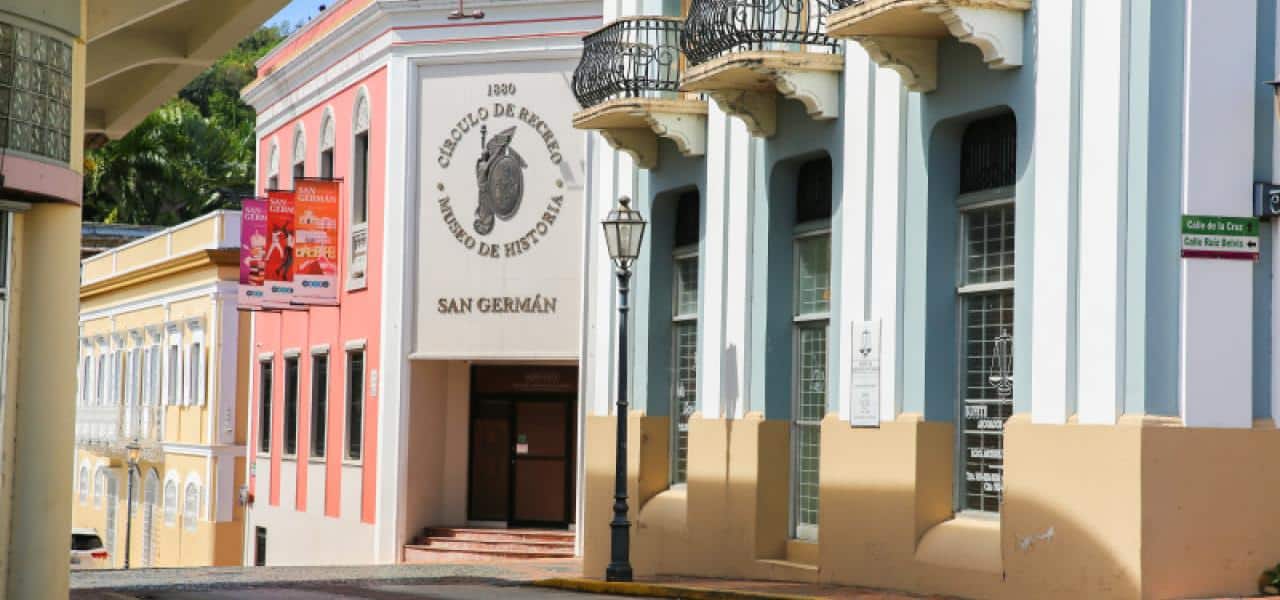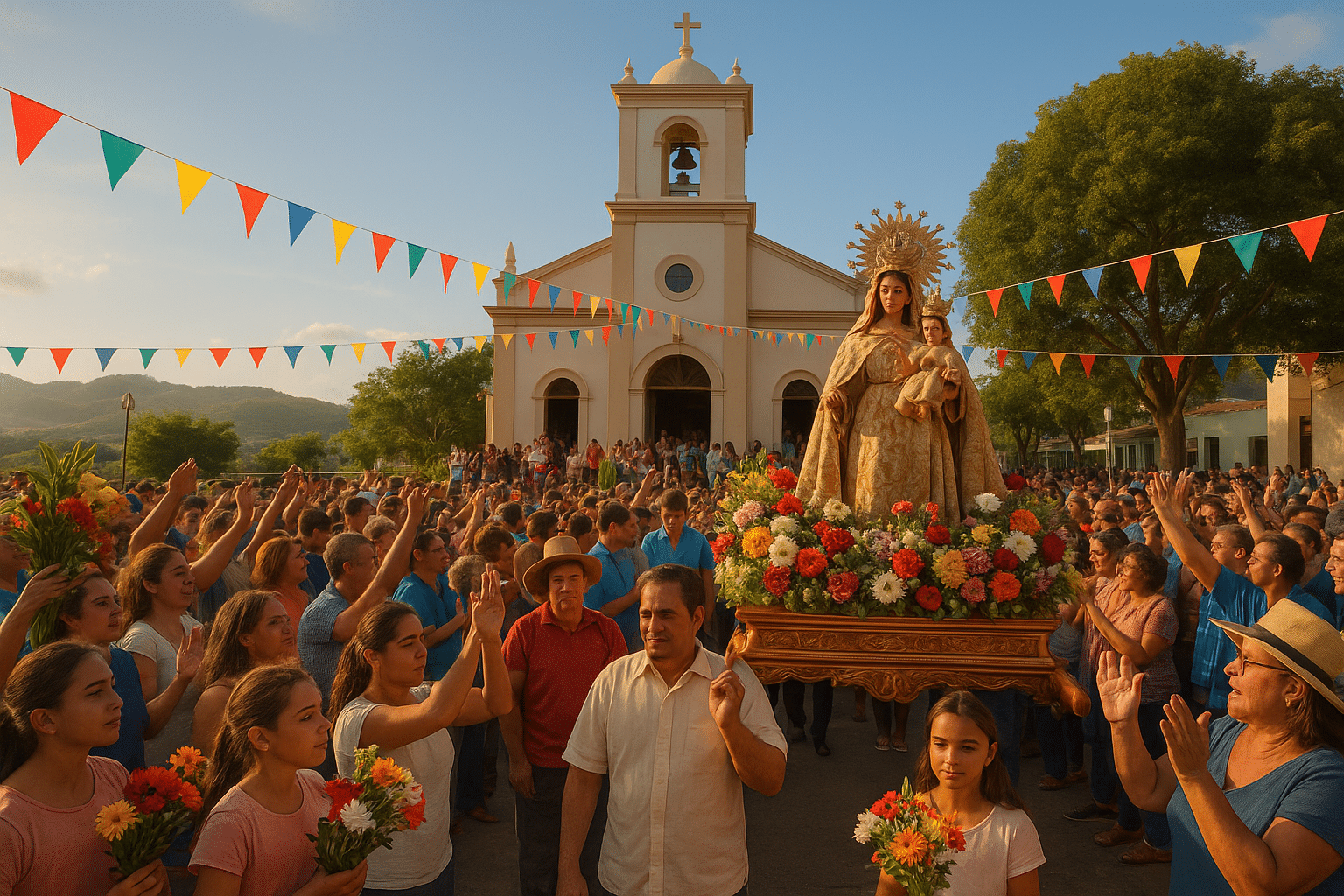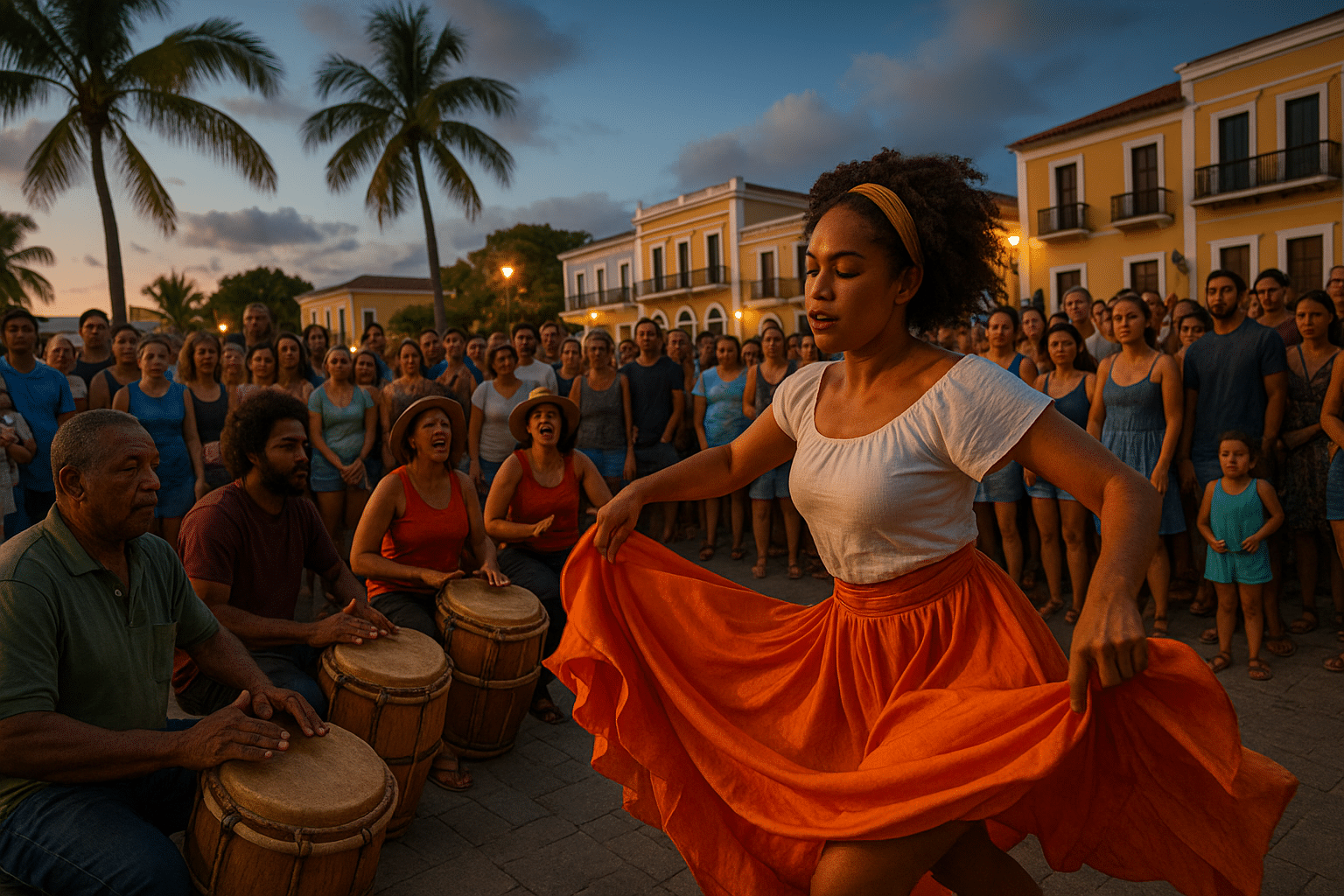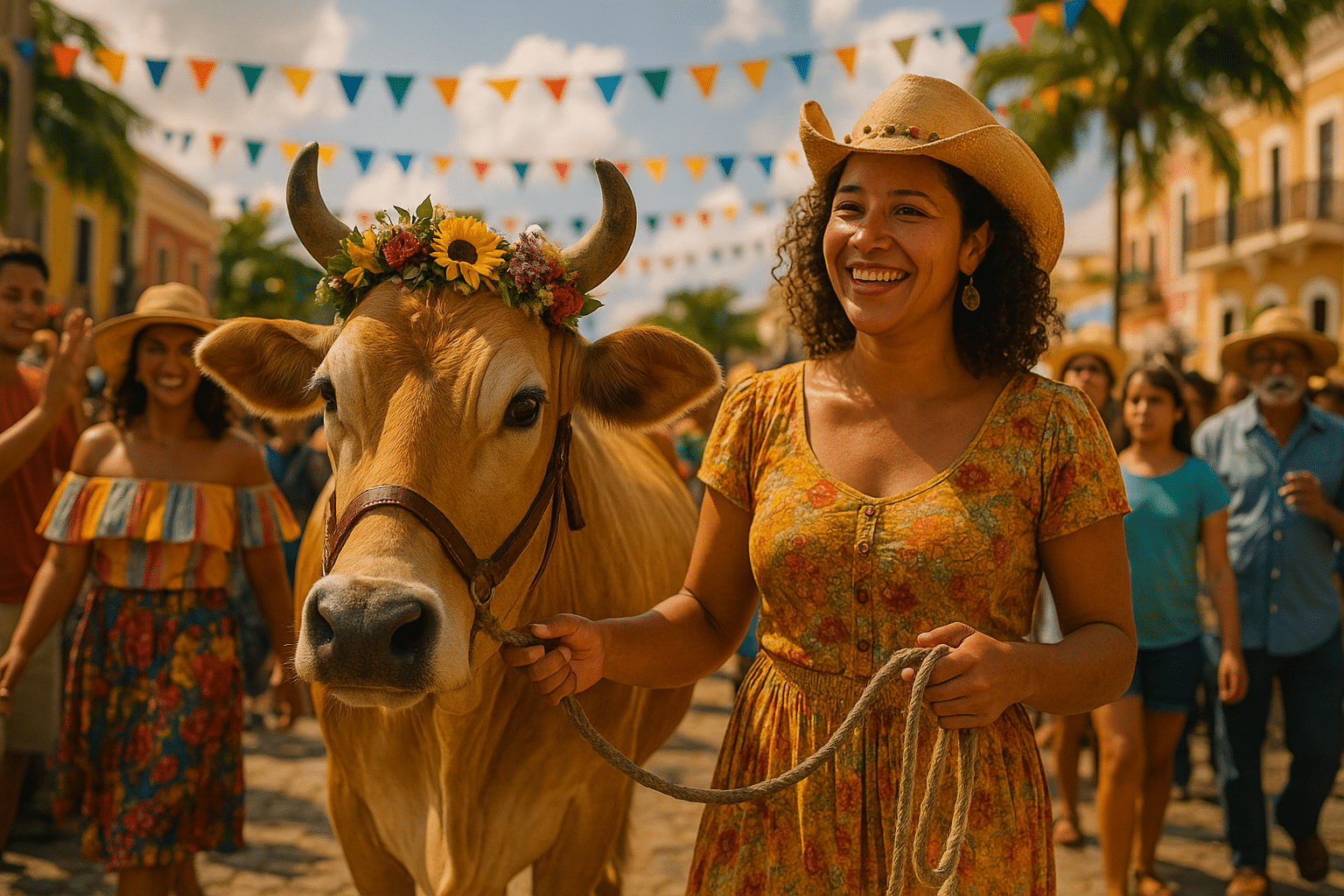There’s a reason why Puerto Rico is often called the heart of the Caribbean. Beyond its sun-kissed beaches, breathtaking mountains, flavorful cuisine, and the vibrant spirit of its people, the Island holds yet another treasure: its remarkable architecture. Much like its natural beauty, Puerto Rico’s buildings tell stories that span centuries, reflecting the Island’s rich cultural tapestry.
The architecture here is as diverse as its history, blending styles such as Neoclassical, Gothic, Baroque, Colonial, and even Art Deco. In San Juan alone, you’ll find more than 400 historic structures, while countless others are scattered across the Island. Each building is a reminder of the many peoples who shaped Puerto Rico—Taínos, Spaniards, Africans, French, Dutch, Irish, and others who left their mark on this Caribbean jewel.
Exploring Puerto Rico means stepping into the past. You can walk through centuries-old fortresses and barracks, admire Art Deco residences that highlight a modern era of elegance, or descend into historic tunnels that once linked towns underground. The Island also boasts some of the oldest churches in the Americas, along with castles, haciendas, and estates that capture its enduring heritage.
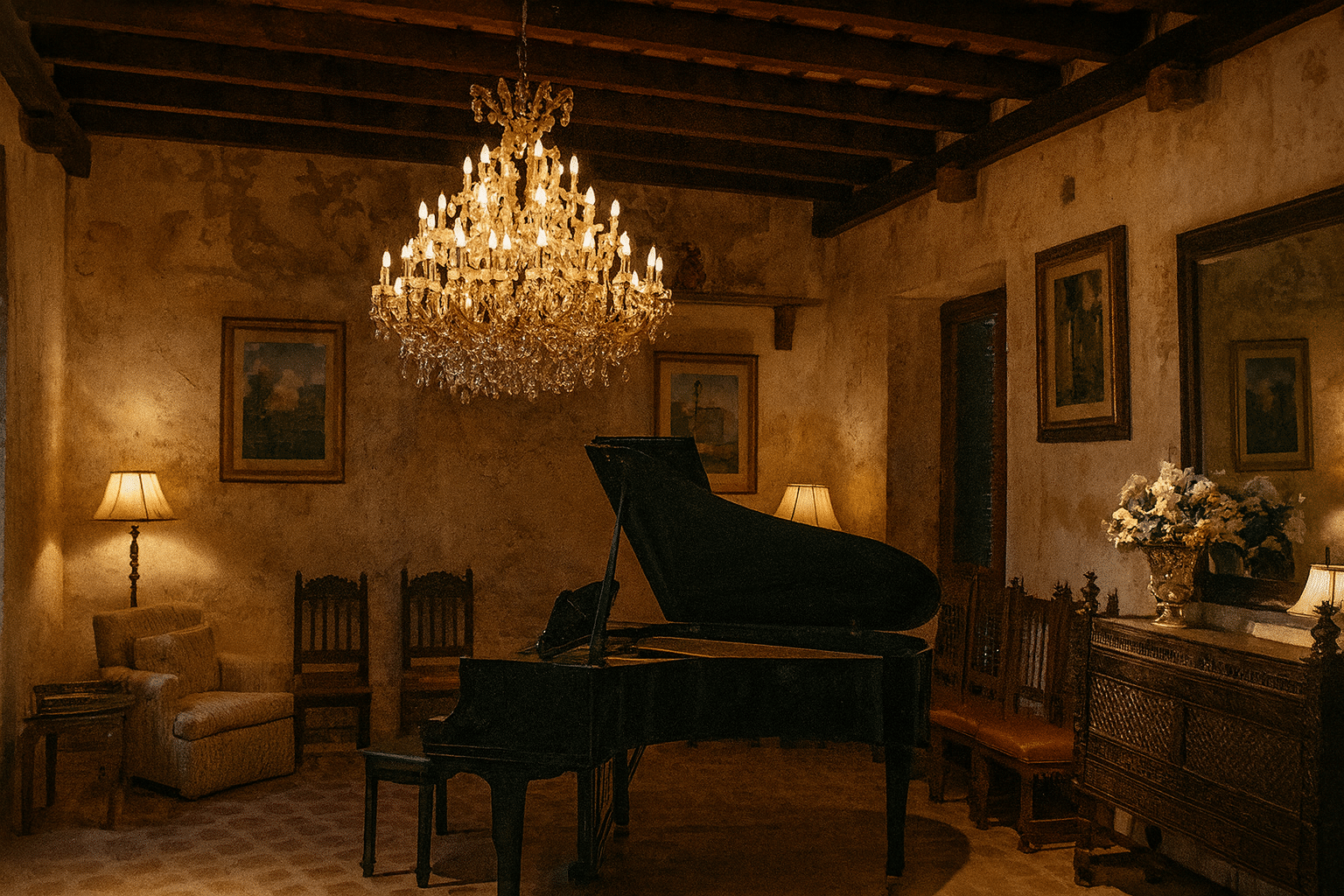
Day One: Fall under the spell of The Gallery Inn
Begin your architectural journey in Puerto Rico with a stay at The Gallery Inn, a hidden treasure along Norzagaray Street in Old San Juan. This boutique hotel is more than a place to sleep—it’s an immersion into history and artistry. From the moment you pass through its doors, you’re transported into a world where old-world elegance, creative spirit, and tropical beauty merge into one unforgettable experience.
The journey begins in a lush entry patio, where vibrant native plants set the mood for discovery. The property’s feathered residents, including Campeche, a charismatic 24-year-old white cockatoo and the inn’s beloved mascot, often greet guests with playful chatter or even a serenade at dusk—an instant reminder that this is no ordinary hotel.
Spanning 22,000 square feet, The Gallery Inn feels like a timeless sanctuary. Its 27 boutique rooms are each individually styled with fine art, antique décor, and hand-carved accents, giving every space a personality of its own. Meander through 15 courtyards and terraces, each with its own charm—ideal for sipping your morning coffee, unwinding in the evening, or capturing those perfect photo moments. The rooftop terrace steals the show with sweeping 360-degree views of Old San Juan’s colorful streets and the shimmering coastline.
The inn’s story is just as captivating as its walls. Ask about its history and you may cross paths with Jan D’Esopo, the visionary artist who founded the property and still lives there today at 87. She shares tales of her passion for the Island and the influence of Don Ricardo Alegría, considered the father of modern Puerto Rican archaeology, who helped her preserve this cultural landmark. Guests are often surprised when Jan herself performs a song during dinner at the Cannon Club, the inn’s elegant fine-dining restaurant.
Every corner of the inn speaks to its layered history—19th-century brick courtyards, hand-carved fountains, antique arches, and rare ausubo wood beams that once supported the structure. With its rooms spread across different levels, The Gallery Inn unfolds like a labyrinthine castle, where art, architecture, and heritage come together in a living museum you’ll never want to leave.
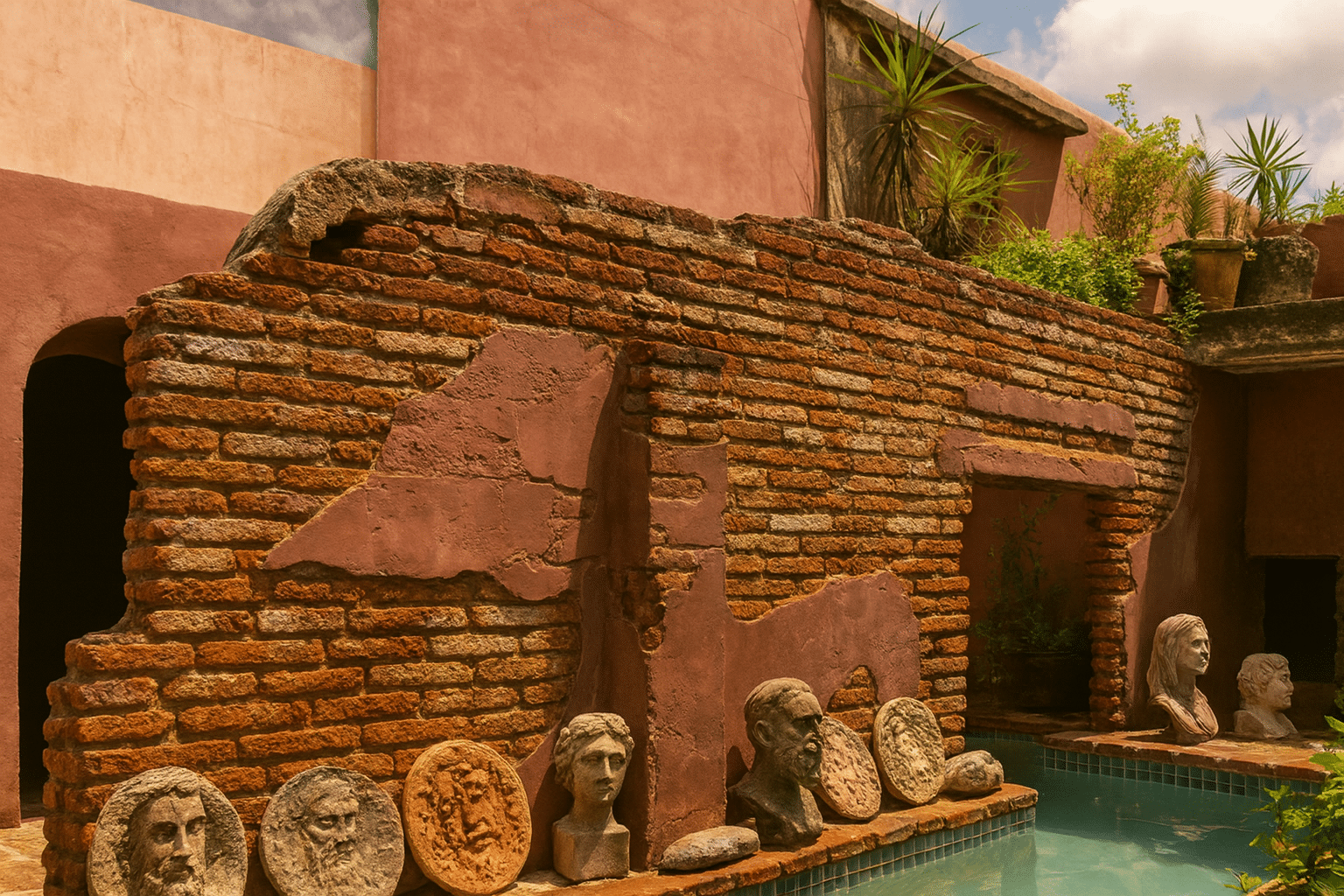
Among the many treasures of The Gallery Inn, the sunken garden near the restaurant entrance is a true showstopper. This enchanting space combines history, architecture, and artistry in a way that feels almost magical. At its heart is a two-waterfall swimming pool, ingeniously built into the inn’s original stone walls and doorways. The design not only preserves the building’s historic integrity but also elevates it with a touch of creative elegance that makes the setting unforgettable.
The artistic vision of Jan D’Esopo is evident everywhere, but perhaps nowhere more than in the inn’s dedication to music. The property proudly hosts The Steinway Society, an exclusive institution that brings internationally renowned pianists to its intimate Music Room. Guests can immerse themselves in unforgettable performances, or simply savor the cultural richness by enjoying live jazz and blues at the Cannon Club and Steinway Piano Bar, where fine dining and world-class music blend seamlessly.
After dinner, the inn invites you to slow down and soak in its atmosphere. Curl up in one of its charming nooks with a book, jot down reflections in a journal, or continue exploring the labyrinth of connected rooms and patios. Every corner reveals another layer of the inn’s personality — a living canvas where history, creativity, and soul come together in perfect harmony.
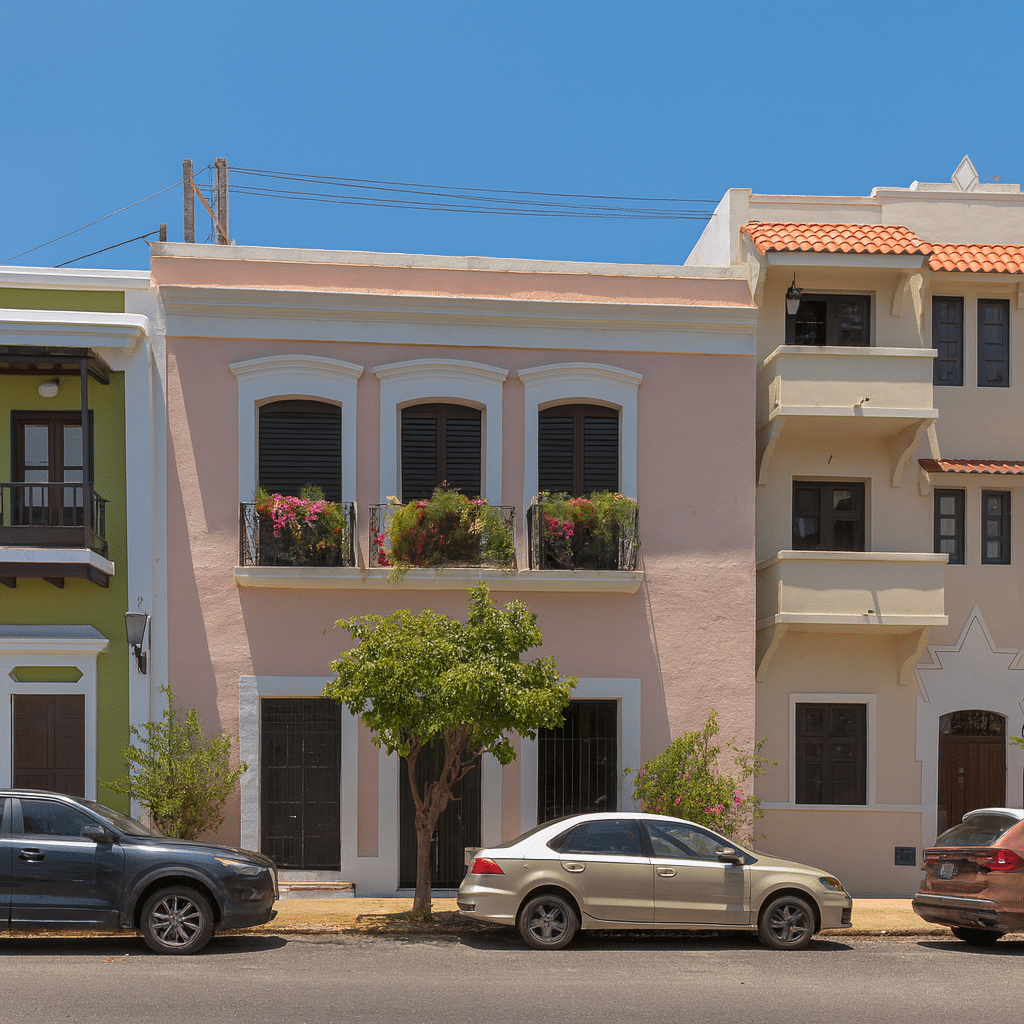
Day Two: Explore Old San Juan through an architect’s eye
Step into Old San Juan, the second-oldest city founded by Europeans in the Americas, where history lingers in every corner and colonial architecture paints the landscape. One of the city’s most charming details is the cobblestone streets, shimmering with their signature blue-gray tone. Known as adoquines, these bricks were shipped from Liverpool, England, and set between 1883 and 1890. Before that, the streets were paved with river stones, making today’s paths not just roads but living artifacts guiding you through Puerto Rico’s past.
Start your morning at Café Don Ruiz, located inside the storied Cuartel de Ballajá. Once a sprawling 19th-century Spanish barracks, this historic complex now houses the Museo de las Américas and a collection of local businesses. The café itself, alongside CinemaBar and other shops, occupies the lower level, while the expansive courtyard and grand colonial architecture remind visitors of its military legacy.
No exploration of Old San Juan is complete without visiting its two monumental fortresses: Castillo San Felipe del Morro and Castillo San Cristóbal. Built over the course of 250 years, these stone strongholds once served as the city’s shield against pirates and invading fleets. Today, they stand as symbols of endurance, offering sweeping views of the Atlantic Ocean and the colorful streets of the old city.
Religion also left an indelible mark on Puerto Rico’s architecture. Catholicism shaped much of the Island’s culture, and nowhere is this influence more visible than in the city’s historic churches. Among them, the San Juan Cathedral is a must-see. Originally constructed in 1521 from wood and straw, it underwent centuries of rebuilding and expansion, finally reaching completion in the 19th century. The result is a striking mix of eras, with Gothic-style ceilings paired with carefully preserved original sections.
Joining a municipal tour unlocks even more secrets, such as hidden staircases leading to panoramic city views. Inside the cathedral, visitors will also find the tomb of Juan Ponce de León, Puerto Rico’s first Spanish governor, and the resting place of Juan Alejo Arizmendi, the Island’s first native-born bishop.
In Old San Juan, every step feels like walking through the pages of history. Its streets, fortresses, and sacred spaces remind you that here, architecture is more than stone and mortar—it’s the very fabric of Puerto Rico’s story.
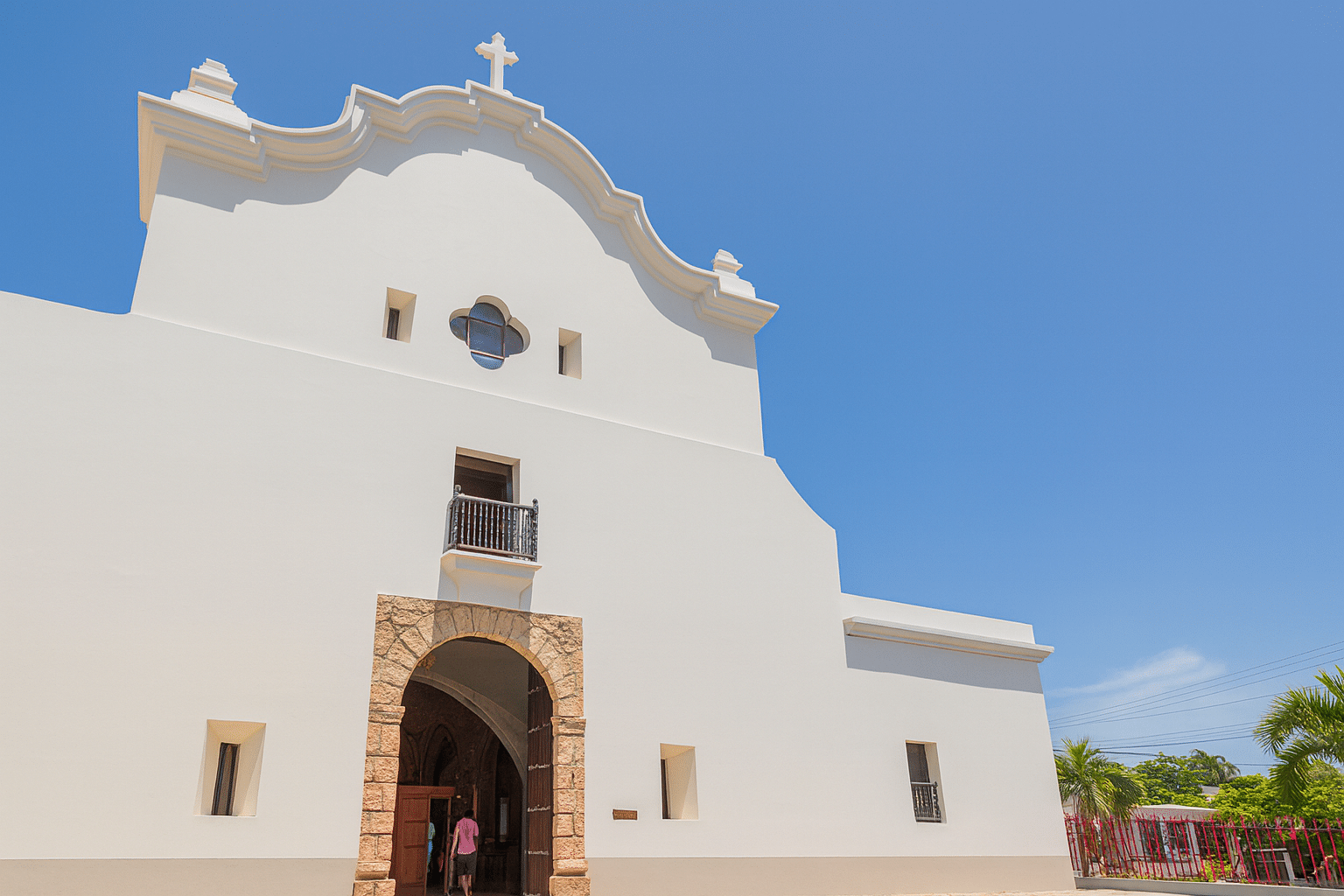
Source: Discover Puerto Rico
Between 1530 and 1775, what is now known as San José Church first rose under the name Saint Thomas Church. In 1858, it was entrusted to the Dominican Jesuits, who gave it its current name, and later, in 1908, the Paulist Fathers elevated it to the status of an official parish. Another sacred landmark is the San Francisco Church, or Capilla Franciscana, originally built in 1756 and reconstructed in 1779 by the Franciscan Order. Walking through Old San Juan, you’ll encounter many such chapels and religious structures, each distinguished by Gothic or Colonial architecture, all echoing Puerto Rico’s strong Catholic traditions.
Yet Old San Juan’s magic doesn’t rest solely in its famous fortresses or grand cathedrals—it thrives in the subtle beauty of its historic buildings.
One standout is La Casa de los Contrafuertes, among the oldest surviving residences in the city. Its unique buttress-style design gives it both character and strength. Today, it is home to the Museo de la Raíz Africana, which highlights the deep and enduring influence of West African culture on Puerto Rican identity.
Another gem is Casa Blanca, built in 1525 for the family of Juan Ponce de León. Although he never lived there, his descendants did, and the property eventually became the residence of General Brooke, the first U.S. military governor of Puerto Rico. Now a museum, Casa Blanca offers visitors a vivid look into the lifestyle of the early colonial era.
As you continue exploring, you’ll inevitably encounter the Muralla de San Juan—the mighty defensive wall that once wrapped around the city. Construction began in 1634 to protect against frequent assaults during the late 1500s, and the fortifications eventually stretched nearly three miles. While parts of the eastern and southern sections were dismantled in the 19th century to allow the city to expand, much of the wall still stands today, a striking reminder of Old San Juan’s fortified legacy.
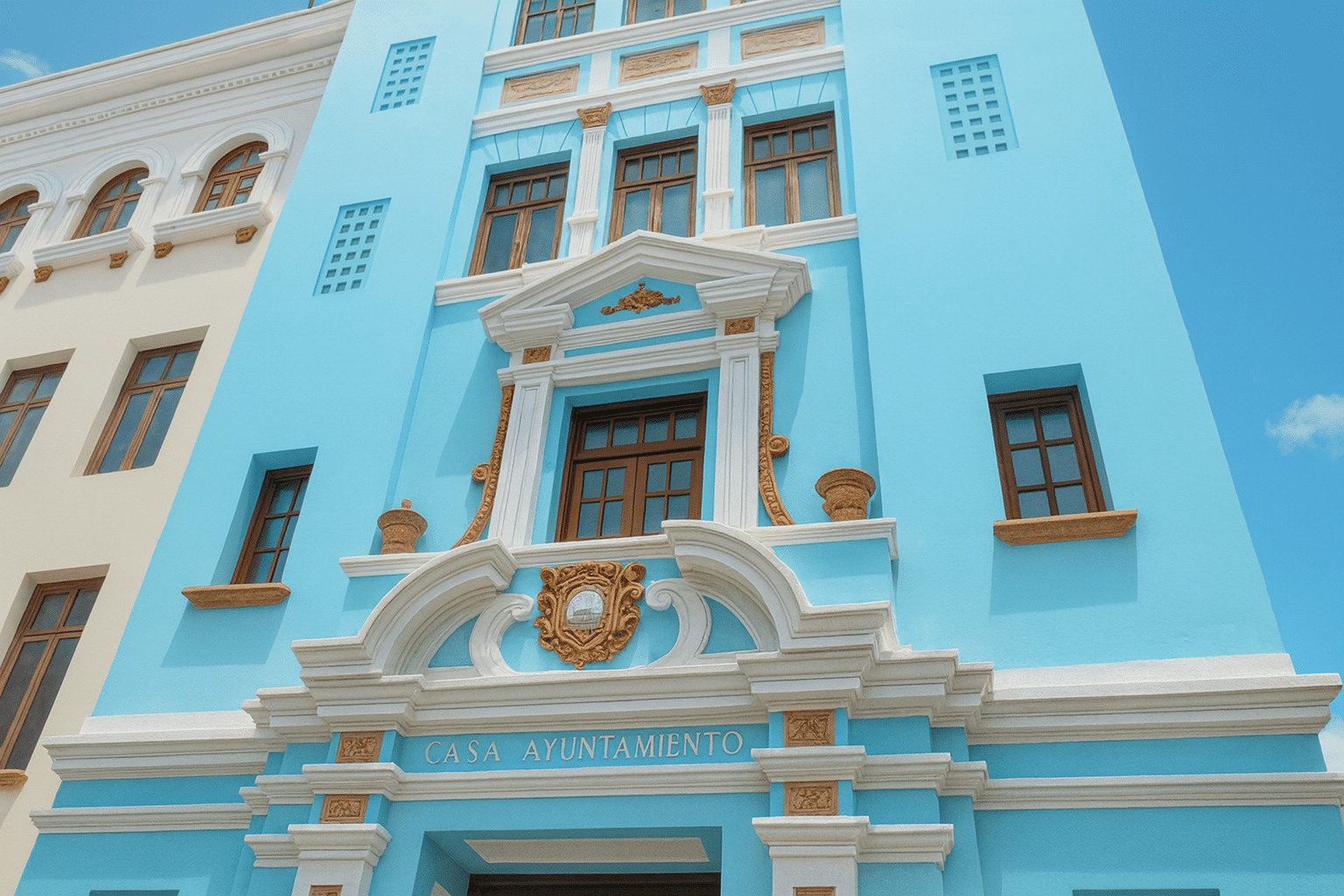
If you’re looking to recharge with a delicious meal, stop by Mercado La Carreta, conveniently situated across from Plaza de la Barandilla. This welcoming spot offers a diverse menu, from indulgent brunch favorites like pumpkin French toast to hearty Puerto Rican staples such as chuletas fritas (crispy fried pork chops) and arroz mamposteao. Whether it’s lunch or dinner, it’s the perfect place to savor authentic flavors while taking a break from exploring Old San Juan’s historic streets.
Once satisfied, continue your walking tour with a visit to the Palacio Arzobispal. Originally a group of homes purchased in 1737 by Bishop Sebastián Pizarro, the buildings were gradually unified and transformed into the impressive structure that stands today. Now home to a historical archive, the palace is a striking reminder of how Old San Juan’s urban density often gave rise to such architectural fusions.
A short stroll brings you to the Antiguo Seminario Conciliar, a building that dates back to the 1830s and is known for its beautiful chapel and dome. Today, it serves as the Centro de Estudios Avanzados de Puerto Rico y el Caribe, a prestigious graduate school founded by the celebrated historian and archaeologist Don Ricardo Alegría — the same visionary who played a key role in preserving The Gallery Inn.
To round out your journey, visit El Capitolio, Puerto Rico’s grand Capitol Building. Constructed between 1925 and 1929, its neoclassical revival design and imposing dome make it one of the most recognizable landmarks in San Juan. For a softer, more romantic vibe, wander along the Paseo de la Princesa, a restored promenade lined with fountains, artwork, and views of the bay, blending history with modern-day charm.
End your exploration with a stop at the elegant Hotel El Convento. Once a convent for nuns in the mid-1800s, it has been transformed into a boutique hotel that retains its historic grace while offering luxury accommodations. Finally, head over to Plaza de Armas, created in 1521 as a military gathering point. Across the square, you’ll see Casa Alcaldía, San Juan’s City Hall. Inspired by Madrid’s town hall, its 17th-century façade and stained-glass windows make it a gem worth stepping into — and the perfect place to snap photos to remember your Old San Juan adventure.
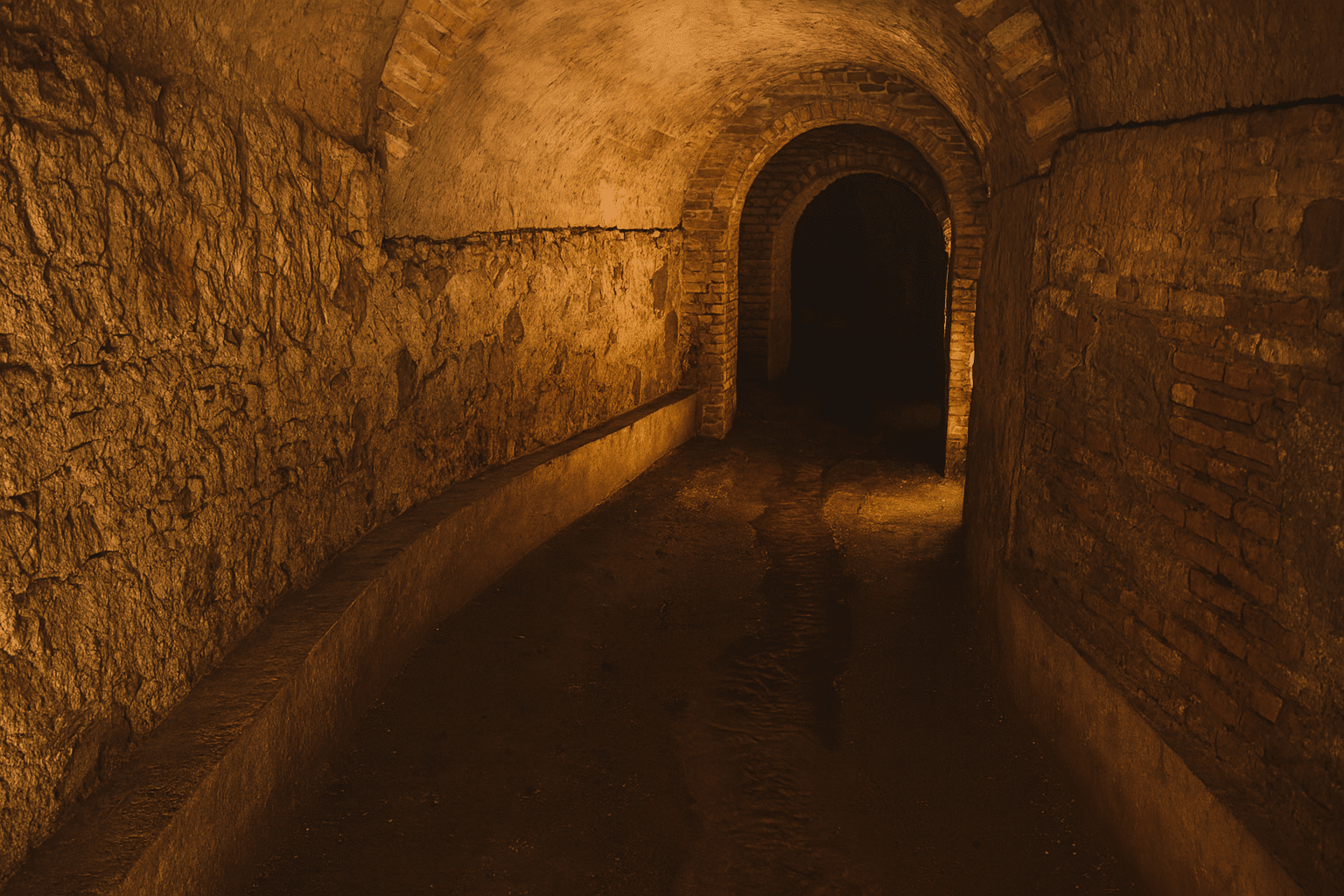
Day Three: San Germán Is the Town of Towns
While many travelers associate San Juan with Puerto Rico’s history, the true cradle of ancient architecture and cultural influence is found in San Germán, the Island’s oldest town. Nestled in the southern region, San Germán is a destination that reveals Puerto Rico’s layered story through its streets, plazas, and centuries-old landmarks.
Known as the “founder of 23 towns,” San Germán didn’t literally establish new municipalities but played a pivotal role in their development. Communities like Ponce, Lajas, Maricao, and Adjuntas all originated here before branching off into their own towns, tracing their roots back to this historic settlement.
The journey through San Germán begins at Porta Coeli, a striking convent and church dating back to 1609. Now a religious museum, it stands majestically atop a broad stone staircase, offering a dramatic first impression. Inside, visitors can admire hand-carved wooden saints, antique choir lofts, tiles etched with biblical verses, and other sacred artifacts that capture the Island’s colonial past. From the entrance, the view stretches across Plaza Francisco Mariano Quiñones, a beautiful dual plaza that anchors the heart of the historic district.
Facing Porta Coeli is Iglesia San Germán de Auxerre, completed in 1688. Though younger by comparison, this church is equally remarkable, with its 18th-century woodwork, elegant archways, and preserved Catholic relics that continue to stand as guardians of faith and history.
What makes San Germán truly unique lies below its cobblestone streets. Beneath the colonial mansions and plazas exists a network of underground tunnels and brick vaults, remnants of the town’s hidden past. These subterranean passages, now recognized as historical monuments, inspire curiosity and have become the subject of countless myths and legends passed down by generations of sangermeños.
To fully experience San Germán’s heritage, visitors are encouraged to connect with the town’s tourism office and arrange a guided tour led by the local tourism director. It’s a rare chance to uncover over 400 years of history, walking through spaces that reveal the architectural and cultural magic of one of Puerto Rico’s most captivating towns.
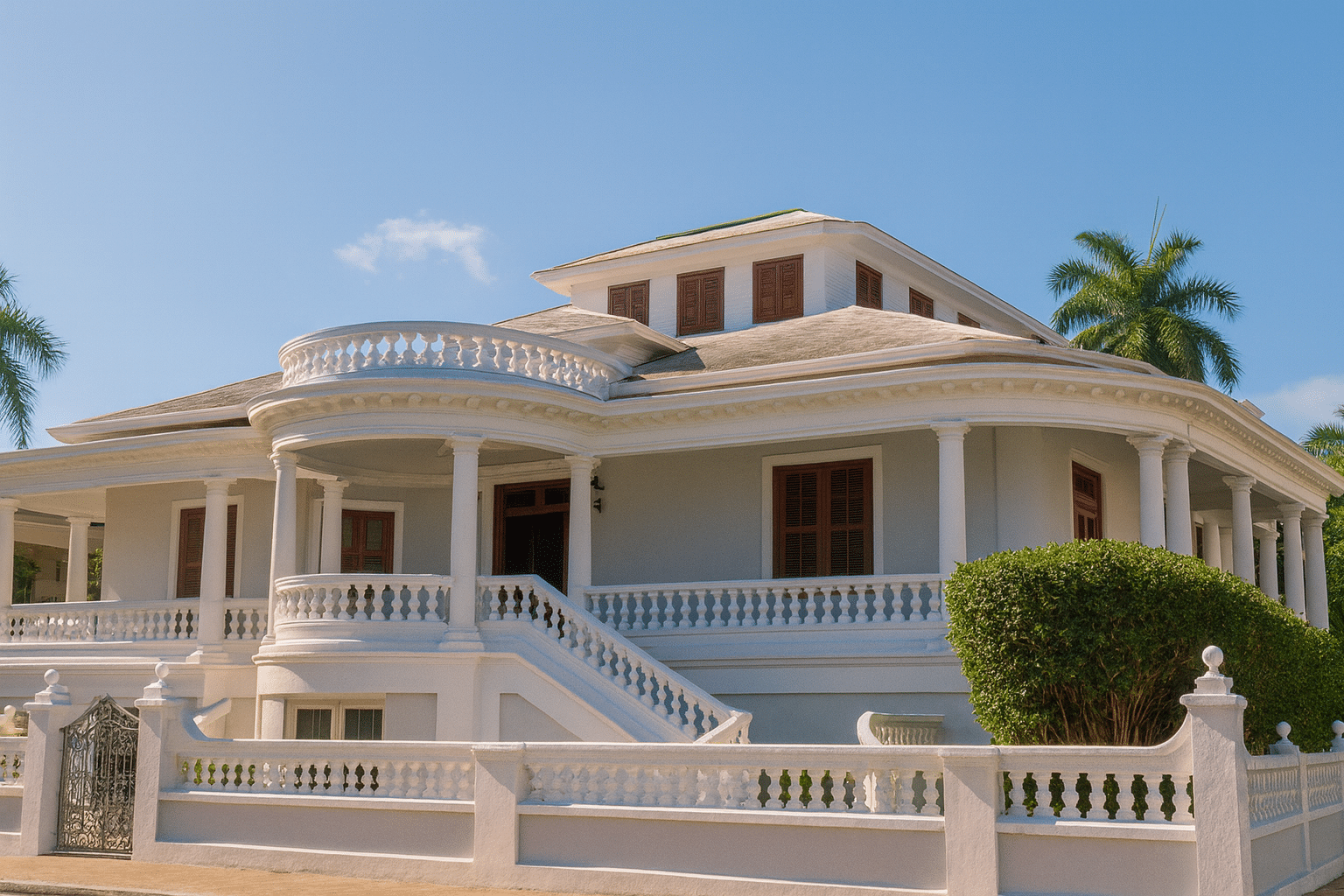
After exploring the underground tunnels (and yes, bring plenty of water — it gets warm down there), take time to wander San Germán’s streets aboveground, where the town’s elegant homes tell just as many stories as its plazas and churches.
One highlight is the Ramírez Roggio House, once known as the Kindy House, a prime example of Creole Neoclassical design. Fully restored in the 1970s, this stately residence is distinguished by its double Tuscan-style columns and intricate stained-glass windows, which make it one of the most recognizable landmarks in the area.
A short walk away, you’ll find the Juan Ortiz Perichi House, often described as one of the most beautiful residences ever built in Puerto Rico. This mansion blends Moorish influence with Creole architecture, resulting in a unique and imposing design. A sturdy concrete wall and ornate iron gate separate the property from the street, while a wide staircase welcomes guests inside. The sprawling balcony, supported by 20 columns, extends across the front and both sides of the house, holding up its vaulted ceiling. Built with fine willow wood imported from Louisiana, combined with locally sourced timber, the home also boasts two massive cisterns and still operates using its original electrical system—a rare detail that ties the residence to its historic roots.

Just below the famous Porta Coeli, you’ll find the Morales Marco House, a gem of early 20th-century design in San Germán. Built in 1915, this residence is a stunning example of the Queen Anne style, still remarkably well-preserved. Details such as its brass ceilings, ornate balcony railings, and the graceful Ionic and Doric columns supporting its terrace all highlight the elegance and character of this architectural treasure.
Not far away, the Casa de Lola Rodríguez de Tió Museum invites you into the world of one of San Germán’s most influential families. Dedicated to the celebrated poet and activist, this carefully restored home recreates the setting in which she lived. Inside, you’ll find antique furnishings, personal items, letters, and historical documents that reflect her family’s role in shaping Puerto Rican identity and cultural pride.
For those eager to learn more, the Museo de la Historia de San Germán is a must-visit. Housed in a former bank building, the museum may be small in size but offers a rich experience. Its galleries explore the town’s legacy, from Taíno artifacts to displays celebrating its passion for sports, especially basketball, a defining aspect of San Germán’s community spirit. While most exhibits are in Spanish, an English-language video ensures visitors gain valuable insights into the town’s historical significance.
Right across the street is the Museo Farmacia La Botica, located in a charming 1887 building. Step inside and you’re transported to a 19th-century pharmacy, complete with microscopes, glass jars, vintage medicine bottles, and even an early Coca-Cola machine. It’s a fascinating glimpse into the evolution of medical practices on the Island.
When hunger strikes, Porticos 1606 is the perfect stop. This local favorite elevates criollo cuisine, offering both traditional and inventive dishes. Enjoy Puerto Rican staples like arroz con gandules, pasteles, and lechón, or try unique creations such as Jamaican-inspired meatballs, codfish croquettes, and yuca al mojo with salmon. It’s a flavorful way to end a day of cultural exploration.
After immersing yourself in San Germán’s rich history and architecture, take a short drive to Ponce, another vibrant hub of Puerto Rican heritage. Here, you can rest and recharge at welcoming accommodations such as Ponce Plaza Hotel, Aloft Ponce, The Fox Hotel, or one of the many charming boutique hotels that blend comfort with local character. It’s the perfect way to continue your journey through the Island’s timeless legacy.
Day four: Ponce, Art Deco All Around!
On your final day of exploration, save the Art Deco treasures of Ponce for a grand finale. This lively southern city is a showcase of culture, history, and striking architecture that instantly captivates visitors. Walking its streets, you’ll notice a signature feature: many buildings with corners deliberately “cut away.” This detail reflects the strong Art Nouveau and Neoclassical influences that continue to shape Ponce’s distinctive architectural identity.
Start your tour at Plaza Las Delicias, the heart of the city, where you’ll encounter one of Ponce’s most beloved landmarks — the Parque de Bombas. Once a functioning firehouse, this bold Gothic Victorian structure, painted in its unforgettable red and black stripes, has been transformed into a museum. It stands proudly as a symbol of Ponce’s resilience, heritage, and community spirit.
From there, make your way just across the plaza to the Residencia Armstrong-Poventud, considered the crown jewel of Ponce’s architectural legacy. Directly facing the city’s cathedral, this elegant mansion is among the finest examples of the Ponce Creole style, an architectural blend that harmonizes European sophistication with local character. Now recognized on the National Register of Historic Places, the home serves as a museum managed by the Institute of Puerto Rican Culture, offering visitors an intimate look at the city’s past.
The residence was designed by Manuel Domenech, one of Puerto Rico’s most celebrated architects during the late 19th and early 20th centuries. With its intricate detailing, refined structure, and cultural symbolism, the mansion reflects not only Ponce’s elegance but also Puerto Rico’s evolution as a hub of artistry and design. Visiting this site provides the perfect conclusion to a journey through the Island’s architectural masterpieces, leaving you with a lasting impression of Puerto Rico’s diverse heritage.
As your architectural tour of Ponce unfolds, one home that immediately commands attention is the Virgilio Monsanto Méndez House, often highlighted on guided walks with Isla Caribe Tours. Built in 1912 by engineer Blas Silva Boucher, the residence was originally commissioned for Prudencia Ubides Aponte, a spiritual medium at the Centro Lumen de Ponce, and her husband, Federico Fond Delord, a successful industrialist. The couple lived here until 1934, the year of Federico’s passing.
The home’s most distinctive detail is its layered, cake-like balconies, which proudly display the initials of its original owners — “PU” for Prudencia Ubides and “FF” for Federico Fond. Standing at the corner of Castillo Street and the intersection of Salud and Virtud Streets, the property quickly became one of Ponce’s most admired landmarks. Officially listed on the National Register of Historic Places in 1987, the residence later became home to the well-known architect Virgilio Monsanto, from whom it takes its current name.
Beyond this landmark, Ponce offers more historic treasures worth exploring. The Plaza del Mercado is a vibrant hub, buzzing with local vendors and everyday life. Nearby, the Old Spanish Military Hospital of Ponce tells a different chapter of history. Built in 1896–1897 by Spain’s Royal Corps of Engineers, this neoclassical building is especially significant — it is the only surviving single-story neoclassical structure in Ponce and one of the finest examples across Puerto Rico.
Completed just before the Spanish-American War of 1898, the hospital was the last major project undertaken by Spain in the Americas. Later, from 1905 to the mid-1970s, it served as the Ponce Asylum for the Blind, cementing its place in the city’s social as well as architectural history. Though no longer in active use, the building remains a poignant reminder of the city’s layered past and architectural evolution.
No visit to Ponce’s architectural wonders would be complete without stepping inside the magnificent Castillo Serrallés. Built in the 1930s, this stately mansion was once the residence of the Serrallés family, founders of the iconic Don Q rum distillery. Today, the estate operates as a museum, where guided tours showcase its refined architecture, manicured gardens, sparkling pool, and artifacts that reveal both the grandeur of the home and the entrepreneurial legacy of one of Puerto Rico’s most influential families.
A short climb up the hill behind the castle brings you to the Cruceta del Vigía, a striking cross-shaped watchtower that offers sweeping views of the city of Ponce. Originally established in the 19th century during Spanish colonial times, the lookout once served as an early-warning system, scanning the horizon for pirate ships and merchant vessels headed toward the bustling port.
As evening approaches, treat yourself to dinner at El Rastro, a restaurant celebrated for its bold mix of Puerto Rican flavors and creative Asian fusion. The menu is designed to surprise and delight, offering inventive dishes that cater to every taste.
Before ending your day, take a leisurely stroll back to Plaza Las Delicias, where Ponce’s heartbeat is most palpable after dark. The square buzzes with energy, surrounded by cozy cafés, boutique hotels, and cultural attractions that every Puerto Rico tourist should experience. For a stylish finale, stop in at The Fox Hotel or Utopía, both hotspots where music, cocktails, and the welcoming warmth of the city come together to showcase the very best of Ponce’s nightlife.

